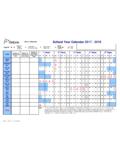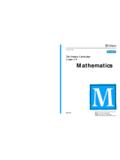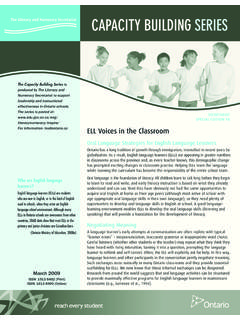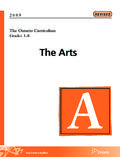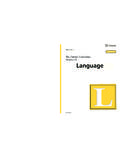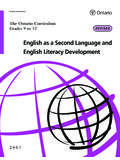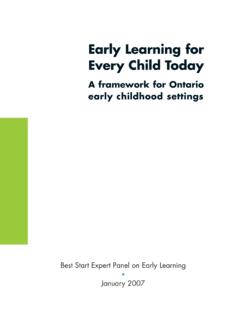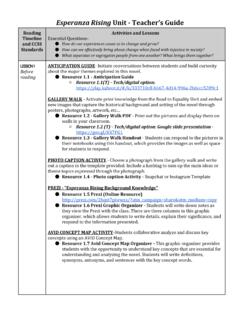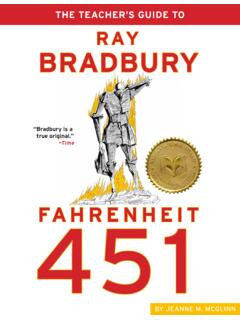Transcription of reading
1 T H I N K L I T E R A C Y: C r o s s - C u r r i c u l a r A p p r o a c h e s , G r a d e s 7 - 1 2. reading Strategies R. Introduction to reading Strategies getting ready to read : Previewing a Text 8. Analyzing the Features of a Text 12. Finding Organizational Patterns 16. anticipation guide Revise 20. Finding Signal Words 24. Extending Vocabulary (Creating a Word Wall) 30. Engaging in reading : Using Context to Find Meaning 34. reading Between the Lines (Inferences) 40. Most/Least Important Idea(s) and Information 44. Sorting Ideas Using a Concept Map 48. Visualizing 56. Making Notes 60. Reacting to reading : Responding to Text (Graffiti) 66. Drawing Conclusions (I read /I Think/Therefore) 70. Making Judgements (Both Sides Now) 74. reading Different Text Forms: reading Informational Texts 80. reading Graphical Texts 84. reading Literary Texts 88. Following Instructions 92. Posters for Instruction: reading Before reading - Ask Questions During reading - Ask Questions During reading - Understand the Text During reading - Make Inferences During reading - Visualize During reading - Make Connections During reading - Think to read During reading - Take Good Notes After reading - Ask Questions After reading - Find the Main Idea(s).
2 After reading - Think About the Text T H I N K L I T E R A C Y: C r o s s - C u r r i c u l a r A p p r o a c h e s , G r a d e s 7 - 1 2. R. Introduction to reading Strategies As students progress through school, they are asked to read increasingly complex informational and graphical texts in their courses. The ability to understand and use the information in these texts is key to a student's success in learning. Successful students have a repertoire of strategies to draw upon, and know how to use them in different contexts. Struggling students need explicit teaching of these strategies to become better readers. Struggling readers need: knowledge of different types of texts and the best strategies for reading them. multiple and meaningful opportunities to practise reading in subject-specific contexts. opportunities to practise reading with appropriate resources. opportunities to talk about their reading and thinking.
3 Background knowledge in subject areas. expanded sight vocabularies and word-solving strategies for reading subject-specific texts. strategies for previewing texts, monitoring their understanding, determining the most important ideas and the relationships among them, remembering what they read , and making connections and inferences. strategies for becoming independent readers in any context. Common Understandings About reading reading is the active process of understanding print and graphic texts. reading is a thinking process. Effective readers know that when they read , what they read is supposed to make sense. They monitor their understanding, and when they lose the meaning of what they are reading , they often unconsciously select and use a reading strategy (such as rereading or asking questions) that will help them reconnect with the meaning of the text. reading skills and strategies can be taught explicitly while students are learning subject-specific content through authentic reading tasks.
4 Effective readers use strategies to understand what they read before, during, and after reading . Before reading , they: use prior knowledge to think about the topic. make predictions about the probable meaning of the text. preview the text by skimming and scanning to get a sense of the overall meaning. During reading , they: monitor understanding by questioning, thinking about, and reflecting on the ideas and information in the text. After reading , they: reflect upon the ideas and information in the text. relate what they have read to their own experiences and knowledge. clarify their understanding of the text. extend their understanding in critical and creative ways. Students can be taught to be strategic and effective readers. Struggling readers benefit from a variety of instructional approaches that demonstrate reading skills as subject content is taught. Direct teaching, thinking aloud, modelling, discussion, and small-group support are only a few of the approaches teachers use to help students become more strategic and effective readers in different contexts.
5 7. T H I N K L I T E R A C Y: C r o s s - C u r r i c u l a r A p p r o a c h e s , G r a d e s 7 - 1 2. R. getting ready to read : Previewing a Text A well-designed textbook, website or other print resource has a variety of elements or features that are applied consistently to help the reader locate and use the material. Some texts have more of these features, and clearer cues, than others do. Previewing a course text can help students to identify the text features and use them efficiently. Purpose Learn how to navigate subject-specific textbooks and resources. Examine the layout and features of a particular text, and how to use it. Payoff Students will: become familiar with different course texts and resources (print and electronic). use strategies for effectively previewing and locating information in different texts, using the table of contents, indices and/or navigation bar. Tips and Resources Most informational texts use a variety of visual, graphic and text features to organize information, highlight important ideas, illustrate key concepts, and provide additional information.
6 Features may include headings, subheadings, table of contents, index, glossary, preface, paragraphs separated by spacing, bulleted lists, sidebars, footnotes, illustrations, pictures, diagrams, charts, graphs, captions, italicized words or passages, boldface words or sections, colour, and symbols. For more ideas, see Teacher Resource, Suggested Prompts for a Text-Features Search. Teaching reading in Social Studies, Science, and Math, pp. 266-269. Beyond Monet, pp. 94, 105. Cross-Curricular Literacy: Strategies for Improving Secondary Students' reading and Writing Skills, pp. 20-21. Cross-Curricular Literacy: Strategies for Improving Middle Level Students' reading and Writing Skills, Grades 6-8, pp. 28-29, 42-43. Reaching Higher Video. Further Support Provide students with a copy of a course-related text that has all of the visual and graphic features ( , diagrams, charts, illustrations, captions, maps, headings, titles, legends) removed or blanked out.
7 Ask students to scan the text and suggest what the blanked-out sections might be. Have students read the body of the text and summarize the information. Ask students to identify the parts of the text that they had difficulty reading , and suggest what additional features would help them to navigate and understand the text better. Alternatively, provide students with a copy of a course-related text showing the text features only, without the body of the text. Discuss what information they can gather from the features and what predictions they can make about the content. Note the connections among the features of a text, the words, and how they help readers understand the content. Encourage students to preview the features of a text before they read the content. Have partners share their previewing strategies. Have students create text search prompts for other course-related materials. 8. T H I N K L I T E R A C Y: C r o s s - C u r r i c u l a r A p p r o a c h e s , G r a d e s 7 - 1 2.
8 R. getting ready to read : Previewing a Text What teachers do What students do Notes Before Select a subject-related textbook, Web- site, or print or electronic resource. Create a text search handout. Use ten to Ask clarifying questions about the twelve prompts to guide students to prompts and the task. particular features of the text ( , List the major topics in this textbook. Locate information about early trade unions.. Where do you find a summary of each chapter? What symbol tells you to pause and think? What symbol tells you to complete a process or experiment? ) read the task prompts and note the See Teacher Resource, Suggested features of text that might be useful in Prompts for a Text-Features Search. completing the task. read the prompts out loud, if needed. During Ask students to work in pairs to complete read and respond to the prompts. the search within a specific time frame. Record findings. Have partners share their findings with Share and compare findings.
9 Use another pair. cooperative group skills to complete the task. After Discuss which items were easy and Identify the easy and challenging which items were challenging to find. prompts. Ask students to suggest which features Identify the features of text they used of text were very helpful and not very and explain how they helped or helpful, and which features should be hindered their task. added to the text. Ask students to use the text features to Use the text features appropriately to complete a relevant reading task. complete the reading task. Make con- nections between different texts, noting the features that are common to many texts and subject areas, and those that are unique to a particular text or subject area. 9. T H I N K L I T E R A C Y: C r o s s - C u r r i c u l a r A p p r o a c h e s , G r a d e s 7 - 1 2. R Teacher Resource Suggested Prompts for a Text-Features Search 1. Using the Table of Contents, find the chapter number for the topic _____ ( , Electricity, Integers, Energy Resources, City Life).
10 2. In the Index at the back of the text, find and list all the pages that deal with _____ ( , static electricity, compound interest, Boreal forest, Louis Riel). 3. On page _____, what is the purpose of the coloured box ( , highlights an added illustration of a concept, or provides a profile of someone in a subject-related business/industry)? 4. What diagram appears on page _____? What provides an explanation of that diagram? How is it connected to other information on that page? 5. In the Table of Contents, which topic is covered in Chapter Fourteen, Section 4? 6. On page _____, what special feature helps you to identify the definition of the concept ecosystem ? 7. In the Index, how many page references are there for _____? Which reference provides you with the most complete information on the topic? 8. In Chapter Six, how many subheadings appear throughout the chapter? Where is the sub-heading that identifies _____ ( , an investigation, summary, activity)?
